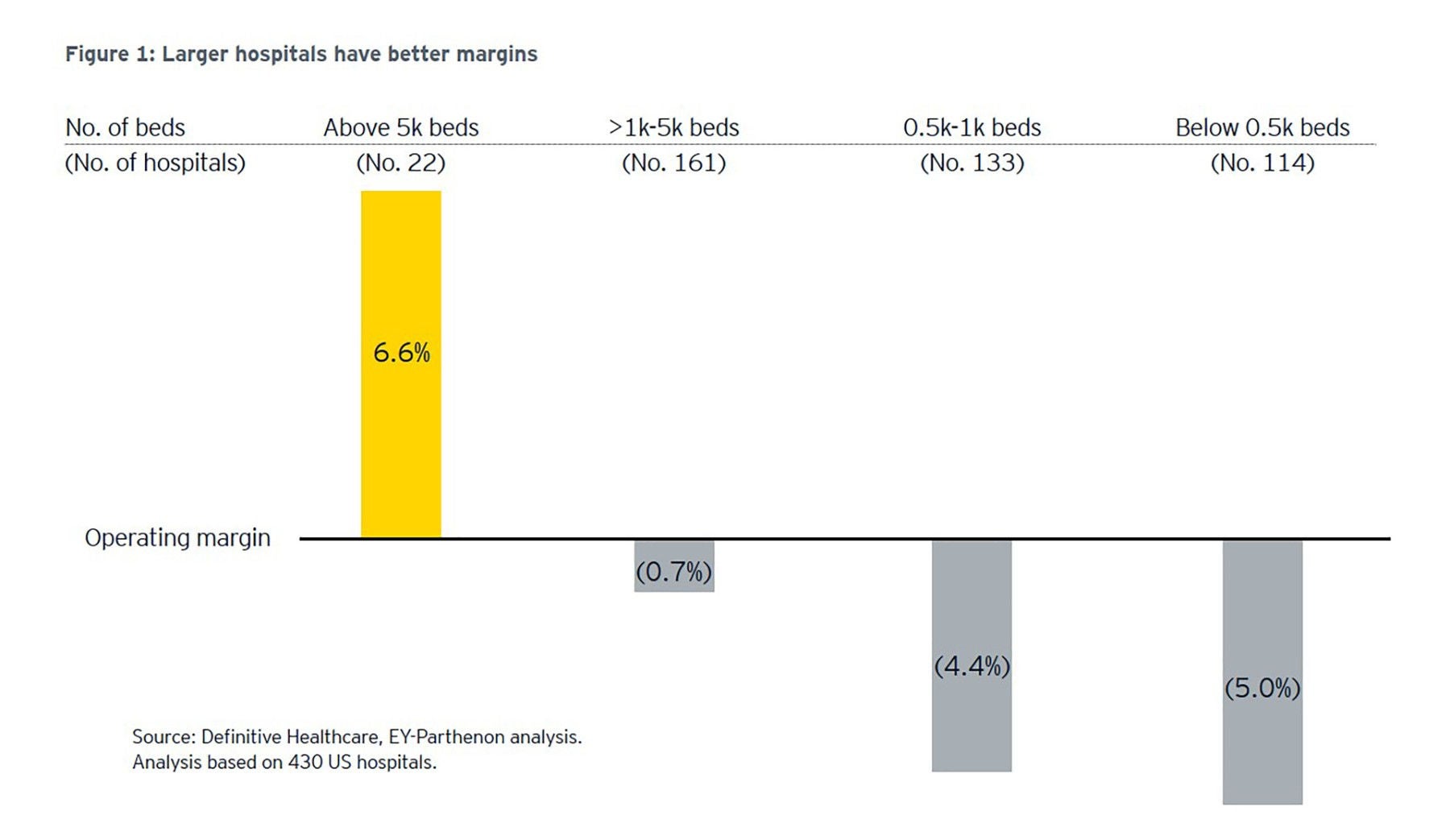EY refers to the global organization, and may refer to one or more, of the member firms of Ernst & Young Global Limited, each of which is a separate legal entity. Ernst & Young Global Limited, a UK company limited by guarantee, does not provide services to clients.
Payers consolidate, while also competing with hospitals
Gaining the strength of scale could be even more important for hospitals as payers consolidate (giving them more pricing power).
The level of payer consolidation varies widely by market, though an American Medical Association study showed that in 2019, 74% of the combined HMO, PPO, POS and exchange markets were highly concentrated. Other data has shown that high payer concentration is associated with lower hospital prices.
In the long run, convergence may be critical to enable the US to break away from the “pay for volumes” paradigm. In the meantime, health systems and payers can work together to find solutions that can work for sustainable economics today and bridge to tomorrow. Hospital M&A will likely play an important role as health systems (1) extend beyond the hospital to develop more effective solutions for care and wellness that the payer community should value; (2) increase their presence in provider-sponsored health plans to manage risk more effectively; and (3) invest, together with payers, in innovative solutions such as tech and analytics that can accelerate transformation toward new models of care.
Six steps to determining M&A viability
Hospital executives can take several steps to determine if M&A is a viable option and to examine what types of deals might be most advantageous for growing in a consolidating health care environment.
- Conduct a financial checkup
- Examine the competitive dynamics
- Review reimbursement dynamics
- Consider demographic changes
- Address outpatient migration
- Look for M&A target opportunities
Explore different M&A deal types
Of the health care executives that expect to pursue M&A in the next 12 months, 64% say they are focusing on bolt-on acquisitions, according to the EY Captial Confidence Barometer. A bolt-on could be the right type of acquisition if it allows a hospital system to address skill sets such as digital care or gives patients more treatment options or locations. A more transformative deal may have its own benefits, allowing for healthier margins, heightened capacity fungibility, and other financial benefits. Perhaps most importantly, owning more resources along the care continuum and being able to provide the spectrum of services a patient might need gives a provider oversight across the patient’s care, which can lead to better quality of care.
But health care is a highly local industry. Dynamics will differ by geographic footprint and different systems may require a different type of partner, so it is essential to understand what different deal types may deliver:
- Consolidation of hospital peers or systems may reduce costs by increasing scale.
- M&A with payers to construct provider-sponsored health plans (PSHPs) offer health delivery organizations the opportunity to capture the full dollar of patient care costs, enable revenue diversification, and provide an opportunity for systems to pursue value-based care models.
- M&A with an academic medical center can allow a health system to increase its scale and improve its regional brand presence as a provider of world-class, innovative care.
- M&A to acquire technology can help speed the development of new capabilities, such as artificial intelligence, data analysis and automation, that can improve both patient outcomes and hospital operational excellence.
- M&A to expand across the care continuum also can improve patient outcomes by offering primary care, home health, rehab, post-acute and sub-acute care coordinated under one organization across the value chain.





